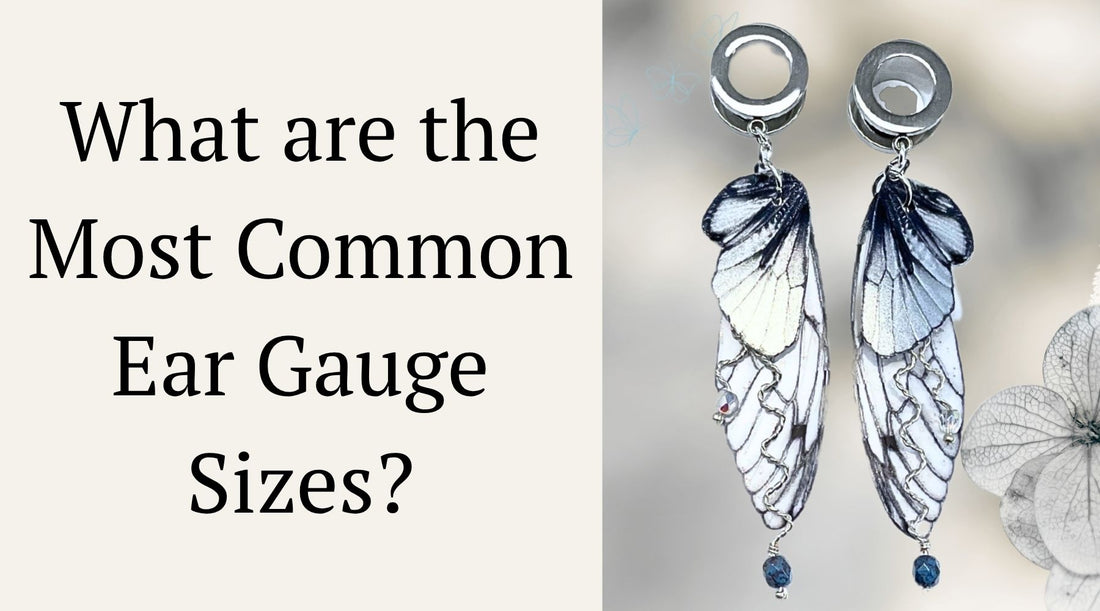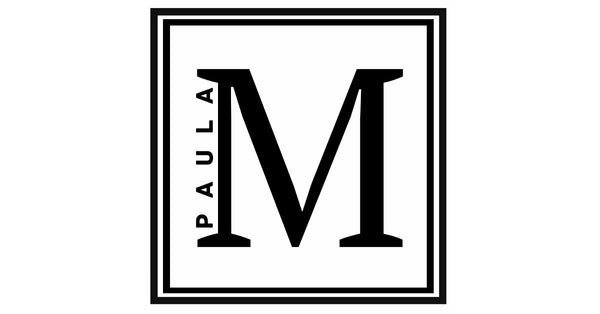
What are the Most Common Ear Gauge Sizes?
Share
If you're starting your ear stretching journey, or just curious about the most popular sizes, you're in the right place. Whether you plan to go small and subtle or bold and statement-making, understanding the most common ear gauge sizes helps you set the right goal for you and help you shop confidently.
Understanding Ear Gauge Sizes
I’m not going to get into the nitty-gritty of ear gauge sizing and safe stretching in this post, but I do have another post you can read for more details: Ear Gauge Chart: Measurements and Sizes Explained.
Before we dive into the most common ear gauge sizes, here’s a quick refresher
Ear gauge sizes work in reverse - the smaller the number, the larger the size. Once you pass 00G, sizes begin to be listed in millimeters or fractions (e.g.12mm or ½").
Know your size
It can get confusing when you're shopping for jewelry or planning your next stretch. That’s especially true when you’re trying to compare typical ear stretching sizes or figure out what’s considered a standard gauge size.
That’s why having a printable chart makes it much easier to compare sizes visually.

The Most Common Ear Gauge Sizes (And Why They're Popular)
These are the frequently used ear gauge sizes that come up again and again for beginners, everyday wearers, and gauge jewelry lovers alike. Keep reading; below I’ll tell you which sizes are most popular that I sell in my shop.
14G – 12G (1.6mm–2mm)
-
These sizes are just slightly thicker than standard earrings.
-
Often the starting point for those stretching pierced ears.
-
A comfortable, low-commitment way to test the waters.
10G – 8G (2.5mm–3mm)
-
Starting to look a bit more noticeable, but still quite manageable.
-
8G (3mm) is a nice middle ground - not too big, not too small.
6G (4mm)
-
A popular size that creates a subtle-yet-visible look.
-
This is often a “first goal” for new stretchers.
4G – 2G (5mm–6mm)
-
These sizes are popular stopping points for those who want their gauges to be noticeable without going too large.
-
Comfortable, and lots of jewelry is available in this range.
0G – 00G (8mm–10mm)
-
Widely considered the most common final size.
“Common stopping points for stretching tend to be 0G (8mm) or 00G (10mm), as the jump between 00G and ½ inch is quite a bit larger and requires a longer healing period.” - Ear Gauge Chart: Sizes and Measurements Explained
12mm – 16mm (½" – ⅝")
-
These are larger sizes chosen by people who’ve been stretching for longer.

Top-Selling Gauge Sizes in My Store
I’ve found that most of my customers choose sizes that balance boldness with wearability. The most popular sizes I sell are:
-
6mm (2G) – A great option for those who want something eye-catching but still subtle.
-
8mm (0G) – By far one of the most common sizes, especially for everyday wear.
-
10mm (00G) – Another top favorite - visibly bold and perfect for showing off statement styles.
These three sizes; 2g, 0G, and 00G, make up the majority of my ear plug sales with size 00G being my #1 seller. These are available in many of my signature designs, including my butterfly wing tunnel plugs. They’re a favorite among customers because the design is super lightweight and doesn't add any extra weight to the ear. Check them out here: Tunnels and Ear Gauges
Note: Most of the earrings on my website can be made into ear tunnels. Please reach out to me if you would like to explore that option.
Why These Sizes Are So Popular
So why do these sizes stand out?
-
Availability – Most plugs and tunnels are produced in these common sizes.
-
Style – These sizes strike a balance between being eye-catching and wearable.
-
Safety – Stretching gradually to these sizes is safer and less likely to cause damage.
-
Comfort – They’re easy to maintain and less prone to irritation or catching on things.
Choose What’s Right for You
There’s no one-size-fits-all answer for stretching your ears. What may be appealing and popular for some may not be right for you.
It’s always helpful to have a size goal in mind - one that allows you to comfortably wear the earring designs you love. Knowing which sizes are most popular can also help you make smart, stylish choices. Whether you're going for something subtle or dramatic, having a size reference in your back pocket makes all the difference.
Top Gauge Sizes: A Smart Place to Start
When it comes to stretched ears, there’s no “perfect” size, but there are some common ear gauge sizes that do stand out as fan favorites.
Sizes like 6mm (2g), 8mm (0g), and 10mm (00g) are some of the best ear gauge sizes for everyday wear and the most popular stretched lobe sizes overall. These sizes strike a great balance: they’re large enough to showcase trending tunnel jewelry but still small enough to be comfortable and versatile for everyday wear.
In my shop, these are the top-selling sizes for a reason. They’re among the most common ear gauge sizes available as earring components, which makes it possible for me to create unique and stylish gauge-friendly designs.
If you're undecided about how far to stretch, starting with a goal of 6mm to 10mm gives you access to a wide range of jewelry while keeping things practical and comfortable. And with your free printable ear gauge chart by your side, you'll always have a handy guide to make smart, stylish decisions as you go.
Useful Resources
Whether you're looking for beginner gauge sizes, everyday tunnel jewelry sizes, or just want to know what's trending, this guide can help.
Blog Post: Ear Gauge Chart: Sizes and Measurements Explained
Free Printable: Ear Gauge Size Chart
Shop Ear Gauges: Ear Gauge & Tunnels Collection



